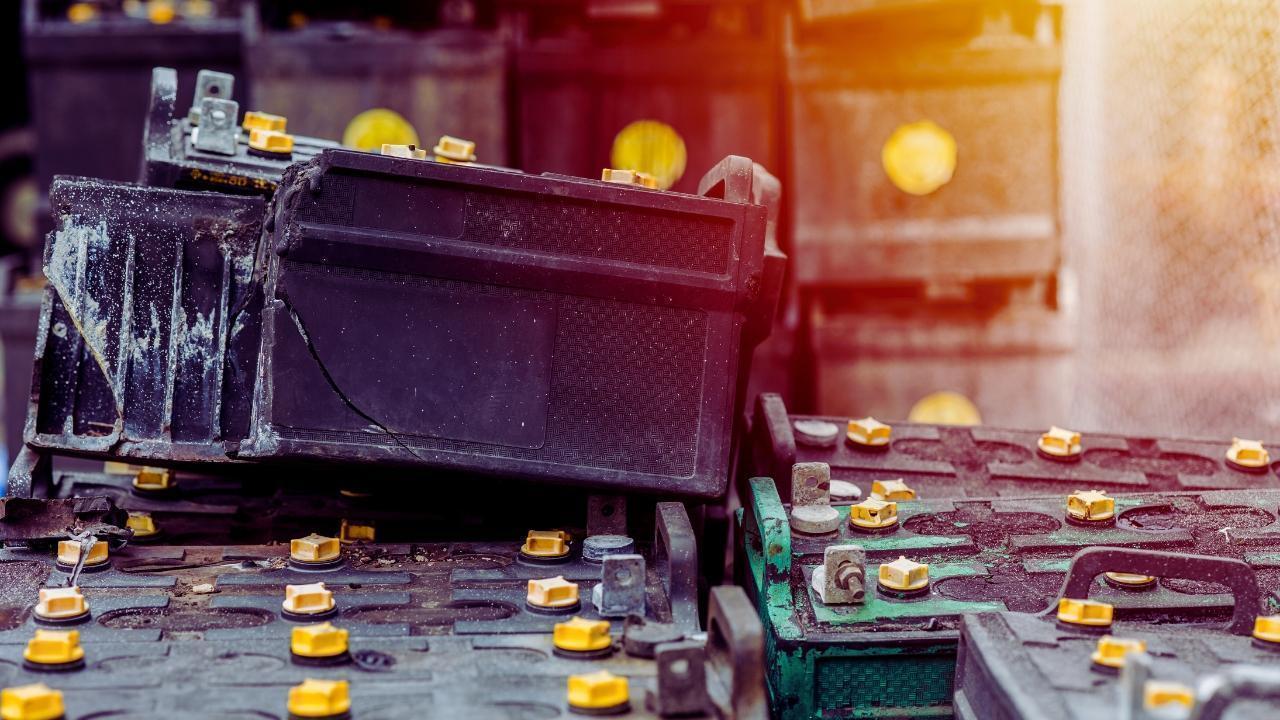
Join 10k+ people to get notified about new posts, news and tips.
Do not worry we don't spam!

Post by : Anis Farhan
In 2025, the world’s focus on clean energy is reshaping industries, and battery recycling has emerged as one of the fastest-growing sectors. With the rapid rise in electric vehicles (EVs), renewable energy storage systems, and portable electronics, used batteries are piling up in massive quantities. But rather than becoming waste, these old batteries are now a valuable resource. Companies around the world are rushing to extract precious materials from discarded batteries, turning recycling into a billion-dollar business. Governments are supporting this change with strict environmental rules, while industries are discovering huge profit potential in recycling batteries responsibly.
The global demand for batteries is skyrocketing. Electric vehicles, smartphones, laptops, and solar power storage systems all rely on lithium-ion batteries. However, these batteries have a limited lifespan, usually around 5 to 10 years. After that, they stop holding enough charge and must be replaced.
Without proper recycling, used batteries end up in landfills, leaking harmful chemicals into the soil and water. Recycling is the only way to manage this growing waste safely while recovering important metals like lithium, cobalt, nickel, and copper. These materials are not only expensive but also limited in supply, making recycling both an environmental and economic necessity.
Electric vehicles are a key reason for the battery recycling boom. In 2025, more people than ever are buying EVs, with sales reaching record highs in Europe, China, and North America. EV batteries are large and expensive, and when they degrade, manufacturers must replace them.
Automakers like Tesla, BYD, and Volkswagen are leading battery recycling programs to reduce costs and meet environmental targets. Many companies are setting up their own recycling facilities or partnering with recycling startups. This not only reduces the need for raw materials but also cuts down on carbon emissions from mining and transportation.
Many governments have introduced strict rules to ensure batteries are recycled properly. The European Union’s “Battery Regulation” requires companies to recycle old batteries and recover a certain percentage of valuable metals. China has also made battery recycling mandatory, with the government offering incentives to recycling companies.
India launched its Battery Waste Management Rules in 2024, pushing industries to collect and recycle used batteries responsibly. The United States is supporting battery recycling projects through funding programs and clean energy policies. These government actions are creating a secure market for battery recycling and encouraging businesses to invest in the sector.
Battery recycling is no longer limited to small recycling companies. Big corporations are entering the sector, recognizing its massive profit potential. Tesla’s Nevada Gigafactory includes a battery recycling unit. Apple is recycling old iPhones and extracting cobalt and lithium from used devices.
In Asia, companies like CATL and GEM Co. are dominating the battery recycling market, handling thousands of tons of batteries annually. Startup companies are also thriving, developing faster, cheaper, and greener ways to recycle batteries. This corporate interest is turning battery recycling into a competitive, high-growth industry.
Modern battery recycling methods are much more advanced than before. Older methods involved burning or breaking down batteries in ways that released toxic fumes. Today, new technologies like hydrometallurgy and direct recycling offer safer, more efficient processes.
Hydrometallurgy uses chemical solutions to extract metals without high temperatures, reducing energy use and pollution. Direct recycling methods recover battery components in usable form, allowing manufacturers to reuse them directly in new batteries. These innovations are lowering costs, improving recovery rates, and making battery recycling a cleaner industry.
Not all old batteries go straight to recycling plants. Many slightly degraded batteries can be given a “second life” by repurposing them for less demanding uses. For example, used EV batteries are being converted into stationary storage units for homes, offices, and power grids.
This trend is especially popular in renewable energy projects. In Japan, old EV batteries are used to store solar power in remote villages. In Europe, energy companies use repurposed batteries to balance electricity supply during peak demand hours. Second-life batteries extend the usefulness of materials before full recycling, saving costs and resources.
The growth of battery recycling is creating thousands of new jobs. Recycling plants require skilled workers, engineers, and technicians to operate safely and efficiently. In countries like China and Germany, entire industrial parks are dedicated to battery recycling.
Developing countries are also joining the race, with Southeast Asian nations setting up recycling hubs to process batteries from local and global sources. As the industry expands, it is offering new employment opportunities while supporting green energy goals.
Despite the fast growth, battery recycling has some challenges. Sorting and transporting used batteries can be dangerous due to fire risks. Many recycling methods still struggle to recover 100% of materials, and some metals like lithium remain difficult to recycle cost-effectively.
Another issue is the lack of standardization—different types of batteries require different recycling processes, making operations complicated. Experts are calling for more research, better battery designs, and international recycling standards to solve these issues in the future.
Looking ahead, experts believe battery recycling will be at the heart of a circular economy for energy storage. Instead of mining new materials, industries will increasingly rely on recycled metals. Governments are planning stricter recycling targets, and battery manufacturers are designing products with easier recycling in mind.
In the next decade, battery recycling could meet up to 50% of raw material demand for batteries, reducing reliance on mining and lowering environmental damage. The industry’s rapid growth means recycling will play a key role in making clean energy truly sustainable.
This article is for informational purposes, highlighting current global trends in the battery recycling industry as of 2025. Readers should consult local guidelines and industry updates for specific developments.










Zohran Mamdani Clinches NYC Mayoral Seat as Victory Speech Blends Politics and Bollywood
Zohran Mamdani won New York City's mayoral race, becoming the city's first Muslim and South Asian ma

India Wins First Women’s World Cup 2025 Title
India lifts its maiden Women’s World Cup 2025 title! Harmanpreet Kaur’s team stuns South Africa in a

Manuel Frederick, 1972 Olympic Bronze Goalkeeper, Dies at 78
Manuel Frederick, a member of India’s 1972 Olympic bronze hockey team, has died in Bengaluru at 78 a

Muhammad Hamza Raja Wins IFBB Pro Card Puts Pakistan & UAE on Global Stage
Pakistani bodybuilder Muhammad Hamza Raja earns IFBB Pro Card in Czech Republic, showcasing Dubai’s

Shreyas Iyer’s Recovery Underway After Spleen Laceration in Sydney ODI
Shreyas Iyer is recovering after a spleen laceration sustained while taking a catch in the Sydney OD

Qatar Ready to Host FIFA U-17 World Cup 2025 in Aspire
Qatar confirms full readiness to host the FIFA U-17 World Cup 2025 from November 3–27, with world-cl